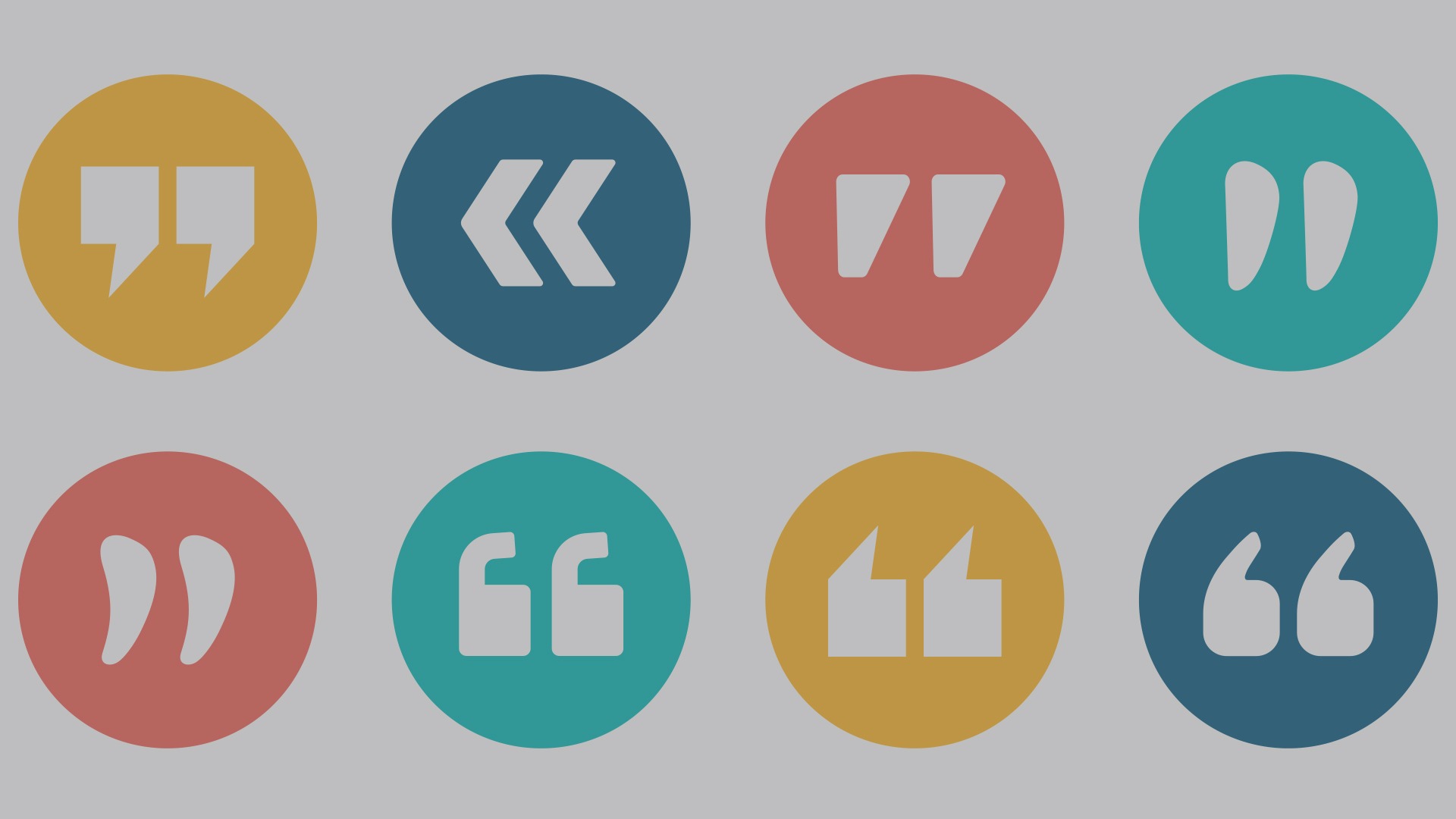Punctuation can be a pain. The 2016 AP Stylebook dedicates 11 dense pages to explaining its intricacies—and the Chicago Manual of Style’s punctuation chapter (yes, chapter) stretches across more than 40 pages.
Quotation marks are a common victim of abuse. Confusion abounds, from the use of Dr. Evil–style “air quotes” around “any word” the author wants to “emphasize” to uncertainty around comma and period placement (inside or outside the quotation marks?).
Leff Communications is here to help. We offer a handy list of no-nonsense rules that, as with our other posts on grammar and style, are the perfect passive-aggressive thing to send to a coworker who thinks every word is ironic enough to warrant quotation marks. These rules apply regardless of the style guide you use (AP, Chicago style, etc.).
Single or double?
In American English,* we use double quotation marks.
“I’m going to bed,” she said. (NOT: ‘I’m going to bed,’ she said.)
Ending commas and periods
In American English,* the period and the comma always go inside the quotation marks, regardless of whether they were part of the original quotation. Let me repeat that for those in the back: put the commas and periods inside the quotation marks.
“I really appreciate a well-formed sentence,” he announced. “It gives me all the feels.”
If the quoted material ends in a question mark or an exclamation point, don’t add a period.
“Timber!” (NOT “Timber!.”)
Other ending punctuation
Put other marks (dashes, exclamation points, question marks, and semicolons) inside the quotation marks if they apply to the quoted matter but outside if they apply to the whole sentence.
Twain wrote, “If books are not good company, where will I find it?”
BUT Was it Twain who wrote, “Always obey your parents when they are present”?
Quotes within quotes
This is where single quotation marks come into play. When you’re placing quotes within quotes, alternate between double and single quotation marks. But still be sure to start with double quotation marks.
“I’m not sure what she means by ‘quantamental investing,’” he said.
Note that the comma comes before the single quotation mark, and there is no space between the single quotation mark and the double quotation mark.
Introductory punctuation
Commas and colons can be used to introduce quoted materials.
He wrote, “The economy’s growth trajectory is strong.”
His book is summarized in its first sentence: “Our economy has nothing to fear from environmental regulation.”
No introductory punctuation
Often, quoted material flows directly from your introductory text and no punctuation is needed.
Though he offered little evidence of their crimes, his call to “round up all the scoundrels, lock them up, and throw away the key” has riled the public.
Shakespeare coined the phrases “brevity is the soul of wit” and “good riddance,” among many others.
Emphasis
Do not use quotation marks to emphasize a word. Just don’t. It’s wrong.
The strength of your words should make any formatting unnecessary, but if you really want to emphasize something, use boldface or italics. Underlining damages readability, and caps lock is inappropriate in running text (and too yell-y).
Irony
You can, however, use quotation marks around a word or words used in an ironical sense.
The “fund-raiser” was really a scam to line the alderman’s own pockets.
Q&A articles
Quotation marks are not required in a Q&A that identifies questions and answers with “Q:” and “A:.”
Q: What makes a great leader?
A: The ability to adapt.
*British English
Note that British English uses single quotation marks in the same way we use double and places all punctuation—including periods and commas—outside the closing quotation mark.
‘I’m going to bed’, she said.
This is un-American and should be avoided at all costs.
Want to learn more?
We read the style guides so you don’t have to. Check out our definitive guide to hyphens, em dashes, and en dashes, learn what bogus writing rules you can ditch, and spruce up your writing with four of our favorite schemes.


Leave a Reply
You must be logged in to post a comment.